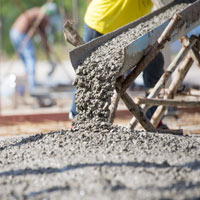Silica Exposure in Construction
August 16, 2018 Construction work comes with many occupational hazards, but exposure to crystalline silica is a particular area of focus for the Occupational Safety and Health Administration (OSHA). Enforcement of new standards for silica exposure went into effect for those in the construction industry last year; but as of June 23, 2018, all general and maritime industries are expected to comply as well. Approximately 2.3 million workers are exposed to crystalline silica each year in the United States.
Construction work comes with many occupational hazards, but exposure to crystalline silica is a particular area of focus for the Occupational Safety and Health Administration (OSHA). Enforcement of new standards for silica exposure went into effect for those in the construction industry last year; but as of June 23, 2018, all general and maritime industries are expected to comply as well. Approximately 2.3 million workers are exposed to crystalline silica each year in the United States.
Crystalline silica is a compound found in sand, concrete, and mortar, and is used in making glass, pottery, ceramics, bricks, and artificial stone. It is also commonly used in foundry work and hydraulic fracking. Though construction workers are most likely to be exposed to silica, workers in many other industries may too be at risk. Crystalline silica is also used in dental laboratories, railroads, paint and coating materials, asphalt, jewelry, landscaping, and stone products.
Why is Silica So Dangerous?
When products containing crystalline silica are cut, drilled, chipped, or grinded, particles of the compound become airborne and are inhaled into the lungs. The most common lung disease associated with crystalline silica inhalation is silicosis. When silica particles are inhaled into the lungs, scar tissue forms and severely impacts lung function. Victims of silicosis are more prone to lung infections and tuberculosis. There is no cure for this disease, and in severe cases, silicosis can be fatal.
Silica particles can lay dormant in the lungs for up to 20 years after exposure. Initial symptoms of silicosis can be so subtle that the damage may only be visible through a chest x-ray. Severe shortness of breath, fatigue, chest pain, and respiratory failure can occur as the illness progresses. Crystalline silica is also a known carcinogen. Workers exposed to silica particles are more prone to develop lung cancer and kidney disease.
OSHA has taken aggressive steps to enforce the new regulations on crystalline silica exposure. In just six months of enforcement in the construction industry, OSHA officials have issued 117 violations. Thirty-five of these violations were for failure to properly measure worker exposure to crystalline silica. Thirty-one violations were issued for failure to comply with OSHA’s engineering and work control methods and respiratory protection, and 20 citations were issued for failing to provide a written crystalline silica exposure control plan.
OSHA officials expect to continue their vigorous enforcement of the new crystalline silica exposure regulations, expanding from the construction industry into all industries using the compound in their products or manufacturing. The new regulations are expected to save 600 lives and reduce the 900 new cases of silicosis, lung cancer, kidney disease, and respiratory illnesses that are diagnosed each year in the United States because of exposure to crystalline silica.
Philadelphia Construction Accident Lawyers at Galfand Berger LLP Help Victims of Occupational Injury and Illness Claim Compensation
If you or someone you know has been diagnosed with a work-related illness or injury, call the Philadelphia construction accident lawyers at Galfand Berger LLP at 800-222-8792, or contact us online to schedule a consultation today. Our offices are conveniently located in Philadelphia, Bethlehem, Lancaster, and Reading, and serve clients throughout Pennsylvania and New Jersey.
 Google Screened
Google Screened
